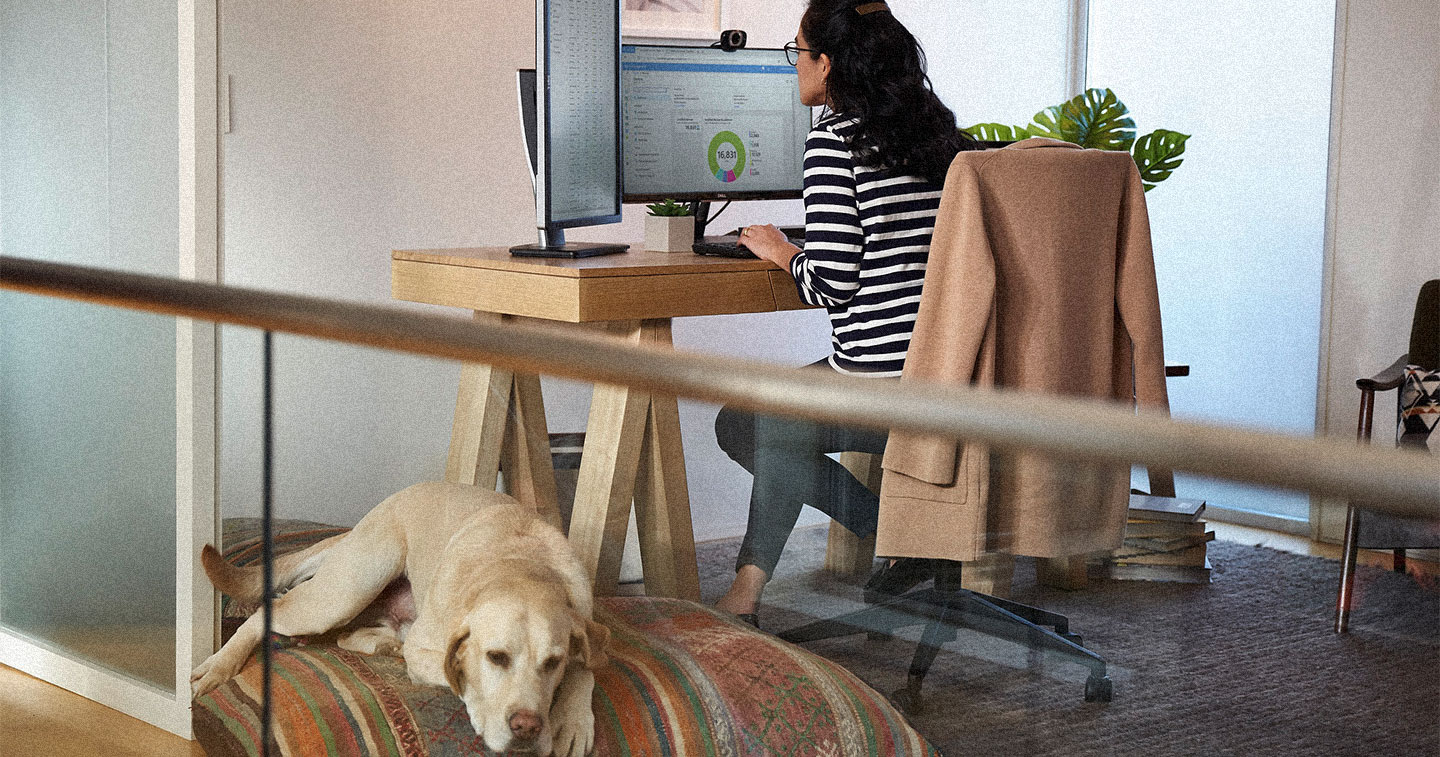SINGAPORE — As the COVID-19 pandemic continues to transform our daily lives, Microsoft, with research from TechRepublic Premium, looked into the impact the pandemic has had on the region’s legacy work styles, business operations and how it has accelerated an increase in overall technology adoption, realizing a hybrid new normal of work.
Through a qualitative research study the whitepaper, titled “Transitioning Asia-Pacific to a New Normal of Work“, sees business and thought leaders across industries — banking, healthcare, education, telecommunications, research, and professional consultancies — share their insights on how organizational cultures in Asia-Pacific are evolving to a new paradigm of work.
“As different parts of the world were hit by COVID-19, life and work were changed overnight for everyone,” said Kady Dundas, Head of Marketing, Microsoft Teams, Microsoft Corp. “All of a sudden we’ve gone from working in conference rooms to working in living rooms, and when you do that you have a high dependence on video. We know that we have about 200 million meeting participants each day, which equates to 4.1 billion minutes of meetings. Those data points show the tremendous movement to remote work.”
Technology: The Enabler
Amid the pandemic, Microsoft found that while organizations have prioritized technology adoption to enable remote working environments and overall business transformation, the change was not driven through technology alone.
“The technology side has been relatively straightforward,” said Dr Joseph Sweeney, IBRS Advisor and Future of Work Expert. “When COVID-19 came and everyone had to start working from home,Microsoft Teams was an obvious and natural tool to push out. It was already there, and the environment is familiar to anyone using Microsoft Office 365. It skyrocketed.”
A forced mindset change was in play encouraging organizations to rethink ways of working, how individuals, groups, and managers interact with one another and the change management needed to adjust to the new normal of work focusing on the emotional impact of the change.
“Often the reluctance to allow remote work has to do with a quite outdated concept of how managers need to manage — for instance, you need to be able to ‘see’ people to police that they are doing what they are meant to,” said Sarah Kaine, Associate Professor, Management Discipline Group and Core Member, CBSI – Centre for Business and Social Innovation, University of Technology, Sydney.
Emerging Trends in the New Normal of Work
Some of the emerging trends that organizations need to be aware of as they plan for the hybrid new normal of work include:
- The risk of burnout – Organizations need to be mindful of the new perception of availability. According to IBRS Advisor and Future of Work Expert, Joe Sweeney, one common response amongst people in their jobs is to “work harder and not switch off.” Those who have started working from home are fielding calls from their bosses late into the evening, underlining the need to re-draw boundaries for out-of-hours contact.
- Career progression concerns – Organizations will need to reassess how performance is measured. Collaboration tools can measure activity but not the value that an individual has brought to the organization. Organizations are now finding that it is the “introverts” that are delivering while working from home, while the “star player” extroverts are no longer the center of attention.
- The need for flexibility and empathy – Research finds that nearly half (47 per cent) of people working from home reported managing at-home distractions as a challenge[2]. Organizations as well as managers and teammates should do their part to not only help employees create a distraction-free environment but also be more flexible in the delivery of work and empathize with people’s challenges of working from home.
- Tech training and preparedness – As technology becomes a growing staple for employees, training will need to go hand-in-hand to unlock the full potential of hardware and software. “There have been people who were resistant to change — it was usually the seniors, because they never needed to learn how to use technology. They always had IT support in the room when they needed it,” said Dr. Nitin Paranjape, CEO and Founder, MacOffice Services Private Limited based in India.
- Incorporating a social element – Organizations need to intentionally focus on policy and company culture rather than raw technology. The Microsoft Work Trend Index[3] released in April 2020 reflected this ongoing quest for human interaction — the number of people turning on video in Microsoft Teams meetings had doubled from before working from home became mainstream. Beyond enabling video conferencing, organizations need to find ways to encourage innovation, creative flow of ideas, and camaraderie that makes an employee feel that they are a valued part of an organization.
The Future of Work is Now and Hybrid
At Microsoft‘s FY20 Q4 Earnings call which reported a six percent revenue increase in Productivity and Business Processes this fiscal year, Satya Nadella, Chief Executive Officer of Microsoft shared, “The last five months have made it clear that tech intensity is the key to business resilience. Organizations that build their own digital capability will recover faster and emerge from this crisis stronger.”
Undoubtedly, COVID-19 had accelerated the transition to new ways of working and honed the focus on innovation across the region. At the same time, social and cultural environments also have a considerable impact on how organizations approach the new normal of work.
In some cases, organizations are in the process of aligning themselves to the national government’s own response to the changing nature of work. Hidekazu Shoto, Innovative English and Information and Communications Technology (ICT) Teacher, Ritsumeikan Primary School in Japan shared how the primary school had to find ways to respond to the changing regulatory environment around work that the government had been implementing. “We just started a new working time system, to follow the new labor laws in Japan. With that in mind, and each teacher’s individual circumstances at home, we had to think about how to match compliance with flexibility,” said Hidekazu Shoto.
In countries where commutes are longer, organizations will find that more staff wish to work remotely. “The appeal is often due to the convenience of professionals being able to manage their own timing,” Andy Khoo, Maybank Head of Customer Experience, based in Singapore, said. “There’s less transportation and time spent on the road — particularly in countries like Indonesia, Thailand and India, where commutes can be long. For other places, like Singapore, it’s simply that staff find they’re more productive when working from home.”
Meanwhile, countries with expensive real estate — such as Australia and Singapore — will find financial benefit in transitioning to a model where office space is shared and cycled among employees that spend part of the time in the office, and other times working from home.
The hybrid approach in the future of work reflects how the lines of work and personal life are blurring. Microsoft‘s second Work Trend Index[5] found that beyond the typical 9am-5pm work day, MicrosoftTeams chats outside of the typical workday (from 8-9 a.m. and 6-8 p.m.) have increased more than any other time during the day, between 15% and 23%. Weekend work is spiking as well — Teams chats on and Saturday and Sunday have increased over 200%.
To cultivate the future workplace, organizations would need to accelerate the process of developing policies enabling individuals to break away from the standard 9 to 5 hours, setting reasonable expectations around availability and relooking performance indicators.
Great Place to Work Institute, Chief Operating Officer, Alicia Tung based in China said, “As far as emotions are concerned, we’re not there yet. But it is happening. In ten years’ time, if I were to make a very broad prediction, I would say 60-40 in terms of working in the office compared to working remotely.”
Business leaders must refresh their focus on policies that enable the upkeep of robust security strategies and effective collaboration. As lockdowns continue to ease across the region, the next step will be a renewed focus on policy during this hybrid new normal of work.
For more information on how organizations throughout Asia-Pacific are grappling with — and succeeding with — remote work, read the full paper here.








